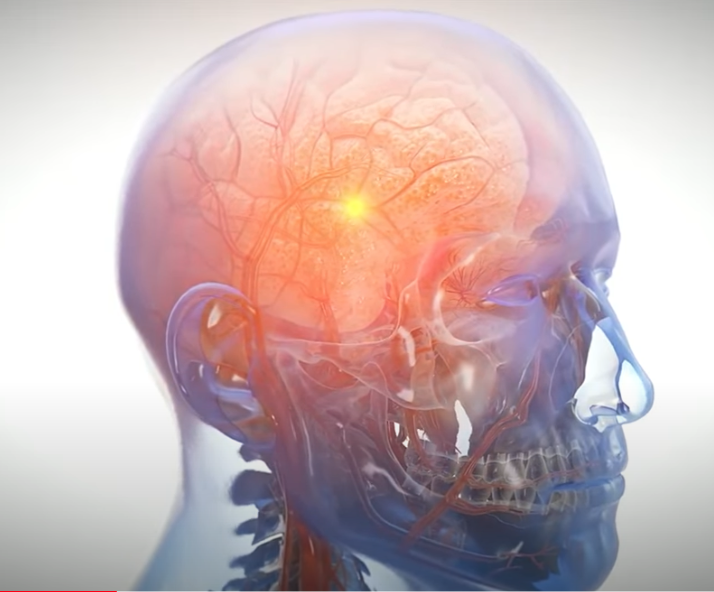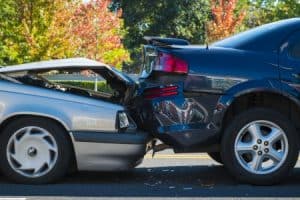Injured in an accident? Get a real trial lawyer. Get Gomez.
Many motorcycle accidents are preventable, but unfortunately, accidents still occur. Motorcycle crashes account for a disproportionate number of motor vehicle deaths and injuries in the U.S. According to the Governor’s Highway Safety Association (GHSA), motorcycle crashes have a fatality rate 28 times higher than that of accidents involving motor vehicles.
Wearing a helmet while riding a motorcycle is the single most effective means of lowering your risk of suffering catastrophic or fatal injuries in a motorcycle wreck. Below, we dig deeper into the many ways helmets can protect the health and safety of motorcycle riders. To learn about your legal rights after suffering injuries in a motorcycle accident, whether you had a helmet on or not, contact an experienced motorcycle accident injury lawyer today.
California’s Helmet Law
By law, you must wear a helmet when operating a motorcycle in California, meaning that an approved, properly fitted helmet is securely strapped to your head. Currently, California is one of eighteen states (plus the District of Columbia) that have universal helmet laws. Twenty-nine other states have laws covering some riders, usually those younger than 18. Three states (Illinois, Iowa, and New Hampshire) do not have any helmet requirements. Research shows that states with a universal helmet law have lower injury and fatality rates in motorcycle accidents.
For those who violate the helmet law, tickets and fines are within the discretion of law enforcement, but officers have the authority to write a ticket for up to $250. If the driver was also breaking some other traffic regulation or was carrying a minor passenger without a helmet, fines may be higher.
Are Helmets Effective?
Years of research overwhelmingly proves that motorcycle helmets save lives. Wearing a helmet does not guarantee that you won’t suffer a head injury or die in a bike wreck, but it massively decreases your risks. Research shows wearing a helmet improves a rider’s chances of surviving a motorcycle crash by more than one-third, and reduces the risk of brain injury in a crash by two-thirds.
Published statistics also show that laws requiring helmet use are effective in reducing deaths and injuries. For example, 99 percent of motorcyclists in states with universal helmet laws were observed wearing helmets. In states without such laws, helmet use was 71 percent. The California Office of Traffic Safety reports that “motorcyclist deaths from not wearing a helmet decreased 33 percent from 45 in 2017 to 30 in 2018.”
What Type of Helmet Does California Require?
There are three helmet manufacturing industry safety standards you may encounter when choosing a helmet: DOT (Department of Transportation), ECE (Economic Commission for Europe) 22.05, and Snell (a non-profit memorial foundation).
Fundamentally, safety standards are concerned with:
- Impact. How well the helmet protects against collisions with large objects.
- Positional stability. Whether the helmet remains in place on the head at critical times.
- Retention system strength. Whether the chin strap keeps the helmet in place upon impact.
- The extent of protection. The helmet’s ability to protect all areas of the head.
Helmets that meet the DOT minimum safety standards should have a certification sticker, which can help to decide which helmet to buy. Also, Snell standards aim to meet and exceed DOT regulations, so may also indicate the safety of a particular helmet.
Regardless of which helmet you choose, you should always make sure that your helmet meets the following requirements:
- Size. Your helmet should fit comfortably on your head. Most helmets come with optional padding. Use it to adjust the fit of the helmet.
- Strap. When you fasten the chin strap, the helmet should not shift around on your head. The strap should fit around your ear and under your chin snugly.
- Fit. You should wear your helmet low on your forehead, just above your eyebrows.
- Sticker. Look for stickers that indicate the manufacturer met minimum DOT safety standards for a motorcycle helmet.
Studies also confirm the importance of wearing the helmet properly. Merely wearing a hard head covering is not sufficient. To work effectively, a helmet must fit properly. A loosely fastened helmet is dangerous. Also, helmets with full-face coverage provide greater protection than those without. Compared to half-coverage helmets, full face coverage goes further in reducing the risk of brain and facial injuries.
Keep in mind, however, that safety standards, while necessary, do not always guarantee the quality and safety of a particular helmet. Sometimes, helmets contain hidden defects that make them unfit for use. If you suffered injuries in a motorcycle crash, and suspect that your helmet did not perform the way it should have, then contact an experienced motorcycle accident injury lawyer to learn about your legal rights.
Common Motorcycle Accident Injuries
Motorcycle injuries happen in all kinds of ways, some of them unique to motorcycles. One common scenario is when a motorcyclist hits loose gravel or a patch of standing water. The tires lose contact with the road, and the bike tips over. Some motorcycle accidents occur when a driver opens the door of a parked vehicle into the path of an oncoming motorcycle. Other obstacles, such as light poles, guardrails, or even hitting a bird, can cause severe injuries. A motorcyclist’s body is highly vulnerable to all sorts of impacts and collisions.
Brain Injuries
A majority of motorcyclists wear helmets while riding their bikes. This helps to reduce the rider’s risks, but even helmeted riders face some risk of suffering a brain injury in a motorcycle accident.
Riders sometimes make the mistake of thinking that if a helmet protects them completely from suffering a head injury (an external injury to their scalp or skull), then it must also protect just as completely against brain injury. That is not the case. Even if the scalp or skull suffers no damage in a crash, the force of an impact can cause the brain to twist, deform, or shift inside the skull, resulting in damage to brain tissue, blood vessels, and nerves.
One critical purpose of a helmet is to absorb and redistribute enough of the force of an impact to prevent this harmful movement of the brain inside the skull. However, even the best helmet may not necessarily deaden the impact enough to prevent at least some brain injury. Instead, the hope that it will limit the severity of the injury so that the rider does not die or suffer catastrophic brain trauma that results in life-long physical, cognitive, and emotional impairments.
Spinal Cord Injuries
A rider thrown from a motorcycle onto the ground in an accident also faces a high risk of spinal cord injury. A helmet can provide some indirect protection against this injury by shielding the base of the skull and upper part of the spine from impact. However, riders can still suffer injuries to their spines and spinal cords in an impact.
Spinal cord injuries frequently result in paralysis, which changes a rider’s life (usually permanently), and can cost millions of dollars to treat and adapt to throughout the injured rider’s life.
Road Rash
In some crashes, the motorcyclist falls from the bike, or gets pinned under the bike, and slides for a distance along the roadway. Any part of the biker’s body not protected by gear in that scenario will suffer the severe lacerations, abrasions, and friction burns of a road rash. This is one reason why face shields on helmets can make an important difference for rider safety.
Severe road rash resembles a severe burn in many ways. It damages the skin and the tissue beneath it, causing agonizing pain and exposing the rider to the danger of deadly infection. Road rash injuries can take months to heal, and leave disfiguring scars.
Leg Injuries
Injuries to the lower extremities are the most common injury (approximately 47 percent) sustained by motorcyclists in crashes. When on the motorcycle, a rider’s legs and feet are closest to the ground and usually the first to hit the ground in an accident. When the bike rolls over, it will often fall on top of the driver’s legs, often causing a fracture of the fibula and tibia, or damage to ligaments. The other major injury risk is a laceration from either the bike contacting the leg or from road rash.
Thorax Injuries
Nearly one in seven motorcycle injuries are to the thorax, or chest area, including the sternum and the ribs. These injuries can be dangerous because the ribs can puncture internal organs, leading to infection and severe health complications.
Injured in an accident? Get a real trial lawyer. Get Gomez.
Why Don’t All Motorcyclists Wear Helmets?
Many people resist wearing a helmet. Some people claim that helmets increase the risk of neck injury and reduce peripheral vision and hearing. However, there is no credible evidence to support these arguments. Others don’t like helmets because they feel that helmets are annoying or do not look “cool.” However, if a rider fully understands the benefits of wearing a motorcycle helmet, they can substantially reduce the chance of serious or fatal accidents.
Why Should Motorcyclists Always Wear Helmets?
Benefits of wearing a helmet include:
Preventing Traumatic Brain Injuries
Motorcycle helmets can prevent many different types of injuries, including scalp contusions, skull fractures, and lacerations to the face. The most dangerous injury they can prevent, however, is a traumatic brain injury. The primary function of the helmet is to absorb and redistribute the force of the impact when a rider’s head strikes the ground or an object.
Countless studies have confirmed that over 70 percent of fatal motorcycle accidents involved severe injuries to the brains of the riders who were killed. Bruises and scratches on the arms, legs, and knees are easier to treat, but brain injuries can cause lasting physical, emotional, and cognitive impairments that can have a profound negative impact on the quality of the injured rider’s life.
Protection From the Elements and Ensuring Visibility
Motorcycling riding exposes riders to the elements. That is part of the attraction of taking to the road on two wheels. Still, the elements can throw some challenges at riders, including sun glare, smoke, rain, wind, dust, gravel, road debris, birds, and insects. Motorcycle helmets with visors, especially, help to minimize the effects of these challenges and to keep riders who wear them safe and in control.
Specifically, a visor helmet protects the rider from injuries to the eyes, teeth, and face. It also can serve as the rider’s sunglasses, reducing glare on sunny days and keeping water out of the rider’s eyes on rainy ones.
Finally, a bright-colored helmet can help to make the rider visible to others on the road. Car and truck drivers, in particular, often struggle to spot motorcyclists in their rear-view and side mirrors, and can even sometimes become “blind” to motorcycles in oncoming lanes. By expanding and brightening the motorcycle rider’s visual profile, a helmet can help to cut down on accidents caused by inattentive motorists.
Do You Wear a Motorcycle Helmet When Riding?

About half of all motorcycle crashes involve a collision with another vehicle, but it is the motorcyclists who usually suffer the most severe injuries because they are so unprotected from the force of an impact.
Helmets do not directly protect against lower extremity injuries, which are the most common results of motorcycle crashes, but they can have an indirect benefit by reducing the chance of an accident overall. More importantly, however, helmets vastly improve a rider’s chances of surviving a crash without suffering fatal or catastrophic brain injuries.
As the Centers for Disease Control and Prevention remind us, helmet use “consistently has been shown to reduce motorcycle crash-related injuries and deaths.” In other words, wearing a helmet keeps you and your family safe from pain, emotional stress, and financial burden that may result from a crash.
If you or a loved one suffered injuries in a motorcycle accident, you may have the right to recover substantial financial compensation for your injuries and losses from anyone at fault. To learn more, contact a skilled, experienced motorcycle accident injury lawyer today for a free case evaluation.
Gomez Trial Attorneys
655 West Broadway, Suite 1700
San Diego, CA 92101
Phone: (619)-237-3490







